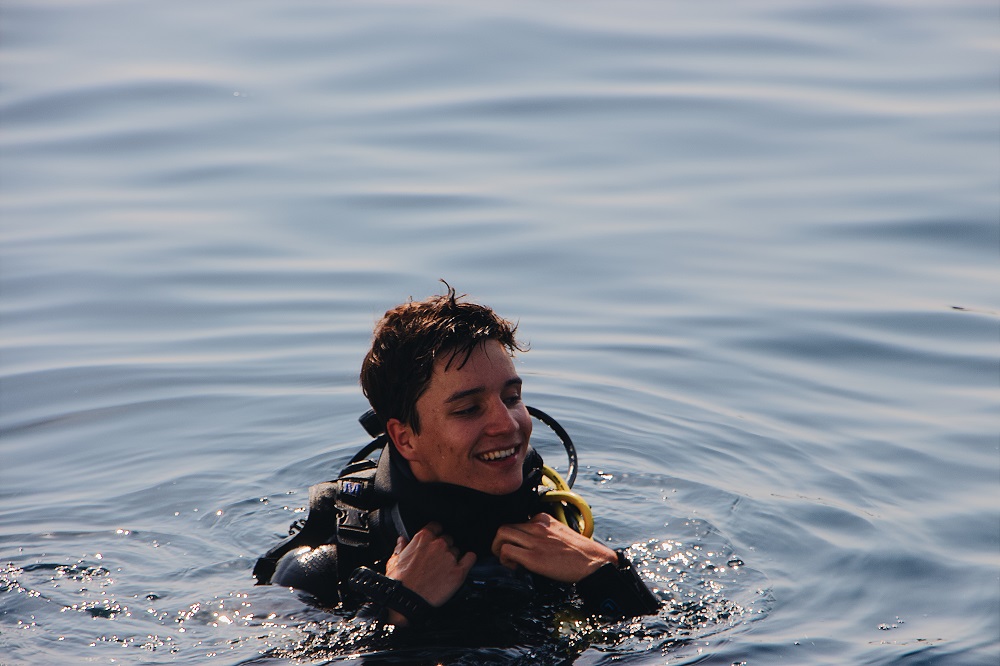The Great Barrier Reef is one of the most breathtaking and awe-inspiring natural wonders on earth. It’s a place where colorful coral gardens thrive and exotic marine creatures call home. And what better way to explore this underwater paradise than scuba diving? If you’re an experienced diver or just starting out, scuba diving in the Great Barrier Reef should be at the top of your bucket list. In this guide, we’ll give you all the information you need to plan an unforgettable dive adventure in one of Australia’s most iconic destinations. So, grab your mask and fins – let’s dive right in!
What is the Great Barrier Reef?
The Great Barrier Reef is a natural wonder located off the northeast coast of Australia. It’s the world’s largest coral reef system, stretching over 2,300 kilometers and covering an area of approximately 344,400 square kilometers. The reef comprises thousands of individual reefs with varying shapes and sizes, each hosting unique marine life.
The Great Barrier Reef is home to more than 1,500 species of fish, 215 species of birds, about 30 species of whales and dolphins plus six types marine turtles that live in its waters. Furthermore it has around 600 different types of soft and hard corals that create beautiful underwater landscapes.
Not only is it one of the most diverse ecosystems on earth but also a UNESCO World Heritage Site since1975 thanks to its high ecological importance for biodiversity conservation. Moreover this makes it an ideal destination for scuba divers from all over the world who come to explore its underwater beauty first-hand.
In conclusion we can say that visiting the Great Barrier Reef should be on everyone’s bucket list as it offers an unforgettable experience full of adventure and beauty both above and below water!
The Different Types of Scuba Diving
When it comes to scuba diving in the Great Barrier Reef, there are different types of dives that you can choose from. Each type offers a unique experience and requires a specific skill set.
Firstly, there is the drift dive where divers let themselves be carried by the current while exploring the reef. This type of dive is best for experienced divers who can navigate through strong currents.
Another type of diving is wreck diving. The Great Barrier Reef has several sunken ships which provide exciting opportunities for exploration. Wreck dives require specialized training as they involve penetrating into confined spaces.
Night diving is also an option where divers get to explore the reef at night when marine life becomes more active. This type of dive requires extra equipment such as underwater flashlights and glow sticks to ensure visibility.
For those seeking adventure, deep-sea diving takes you down to depths beyond 18 meters below sea level. However, this kind of scuba diving requires advanced certification due to increased risks associated with extended periods spent at depth.
In summary, choosing what dive suits your capabilities will make your scuba-diving trip in the Great Barrier Reef a memorable experience!
The Best Time to Go Scuba Diving
The Great Barrier Reef is a year-round scuba diving destination, but the best time to go depends on your preferences. If you want to avoid crowds and enjoy good visibility, consider going between May and November. During this period, the weather is usually dry and sunny with less precipitation.
June to August offers excellent underwater visibility, making it perfect for photography enthusiasts. However, keep in mind that these months are also peak tourist season; thus accommodation rates may be higher than usual.
If you’re looking for warmer water temperatures of around 28°C or above, book your trip during December through February. This period is considered low season due to increased rainfall levels and occasional tropical storms.
There’s no wrong time to visit the Great Barrier Reef as each month has something unique to offer for divers with varying interests and preferences. Just make sure you check weather forecasts before booking your trip!
What to Bring Scuba Diving
When it comes to scuba diving in the Great Barrier Reef, packing the right gear can make all the difference. Here are some essential items that you should bring with you:
1. Dive Gear – Depending on your preferences, you may choose to rent or bring your own dive equipment. Either way, be sure to pack a wetsuit, fins, mask and regulator.
2. Sun Protection – The Australian sun can be harsh so don’t forget sunscreen with an SPF of at least 30 and a wide-brimmed hat.
3. Towel and Change of Clothes – After your dive session is over, you’ll want to dry off quickly so bring a towel and change into comfortable clothes.
4. Water Bottle – Dehydration is common while diving so always carry a reusable water bottle filled with fresh water.
5. Snacks – Diving requires energy so pack some snacks like trail mixes or energy bars for quick refueling during surface intervals.
6. Underwater Camera – Don’t miss capturing those amazing underwater moments; consider investing in an underwater camera which will allow you to take photos up close without any damage done
Remember: Pack light but do not skimp on important items as they will ensure that you have an enjoyable experience while scuba diving in the Great Barrier Reef!
How to Prepare for Your Dive
When it comes to scuba diving in the Great Barrier Reef, proper preparation is crucial. Here are some tips on how to prepare for your dive.
First and foremost, make sure you’re physically fit. Scuba diving can be a strenuous activity, so it’s important to be in good health before attempting a dive.
You’ll also need to have the right equipment. Making a checklist of necessary gear beforehand will help ensure that you don’t forget anything important. Some essential items include wetsuits, fins, masks, regulators and buoyancy control devices (BCDs).
Before setting off on your dive, it’s important to familiarize yourself with the location and its potential hazards. Ask your guide about any dangerous marine life or underwater currents you should be aware of.
During your briefing with the instructor or guide make sure they know what level diver you are and if there are specific adjustments needed because of this – This helps ensure that everyone remains safe during the dive.
Always remember to stay calm while underwater. Panic can quickly lead to mistakes which could potentially put yourself or others at risk.
By following these tips and taking all necessary precautions ahead of time, you can enjoy a safe and unforgettable scuba diving experience in one of nature’s most beautiful locations – The Great Barrier Reef!
The Different Types of Divers
When it comes to scuba diving in the Great Barrier Reef, there are several different types of divers you may encounter. Understanding these different types can help ensure a safe and enjoyable experience for everyone.
Firstly, there are certified recreational divers who have completed training and hold a certification from an accredited agency. These divers typically dive for pleasure and leisure rather than scientific or commercial purposes.
Secondly, technical divers have undergone further training beyond recreational diving certifications to allow them to safely explore deeper depths or engage in more complex dives such as wreck diving or cave diving.
Thirdly, commercial divers work professionally underwater in fields such as construction, maintenance, search and rescue operations.
Scientific researchers also make up another category of diver seen on the reef. They collect data on marine life that cannot be observed through surface-level research methods.
Regardless of their purpose for being under water – all scuba divers should adhere strictly to safety guidelines when exploring the Great Barrier Reef’s unique ecosystem.
Conclusion
Scuba diving in the Great Barrier Reef is an unforgettable experience that every diver should try at least once. The reef’s rich marine life and crystal-clear waters make it a paradise for divers of all levels.
Whether you are a beginner or an experienced diver, there are options available to suit your needs. However, before taking the plunge into the depths of the ocean, ensure that you have adequate training and preparation to make your dive safe and enjoyable.
Furthermore, be mindful of preserving this precious natural wonder by practicing responsible diving techniques and respecting its fragile environment.
So what are you waiting for? Put on your wetsuit, strap on your gear and dive into one of nature’s greatest wonders -The Great Barrier Reef!








